University of California, Riverside
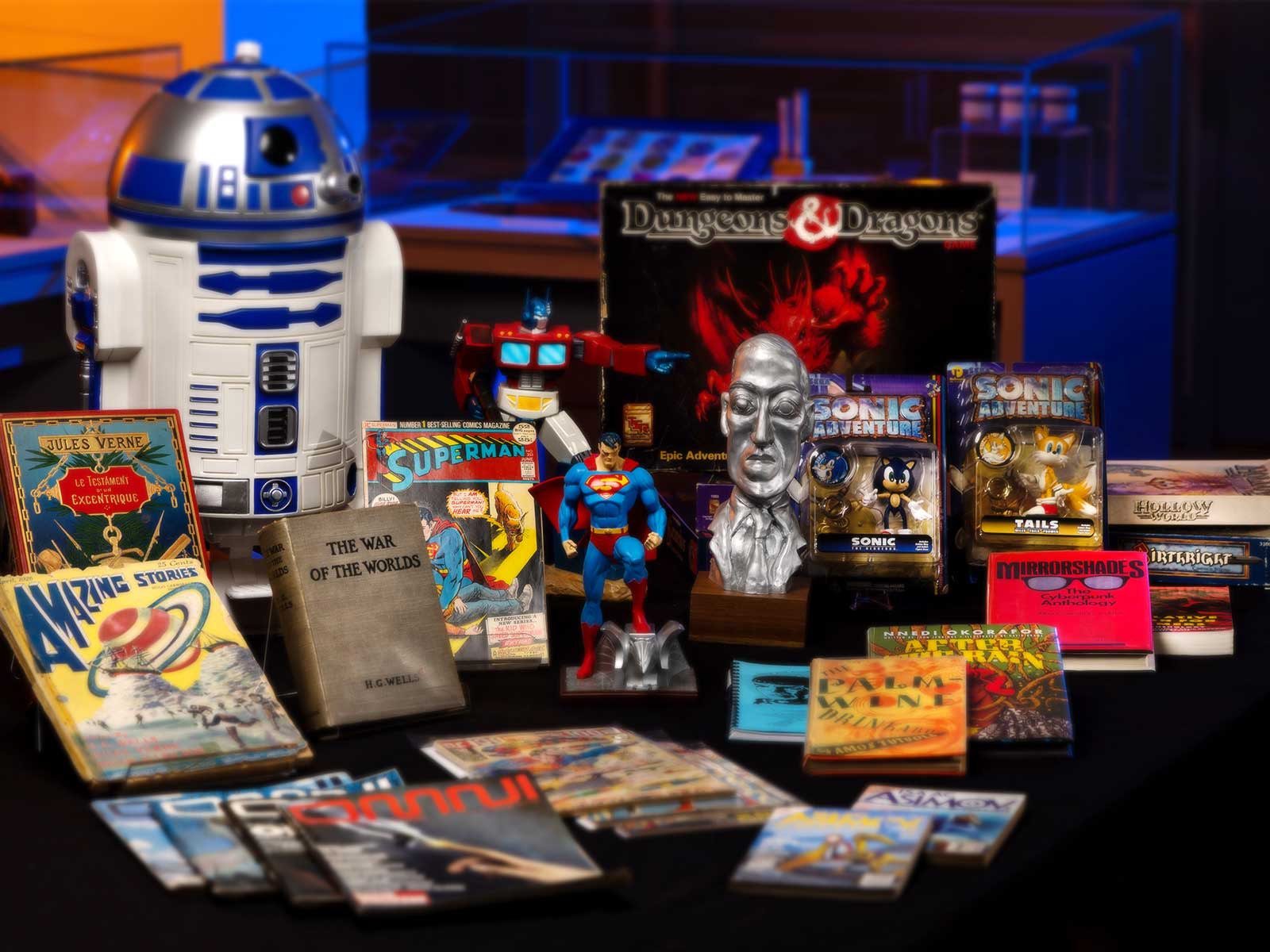
Treasures of the Eaton
Peruse through some of the rare and noteworthy items housed within UCR’s extensive Eaton Collection of Science Fiction & Fantasy

The Eaton Collection of Science Fiction & Fantasy’s vast trove of over 300,000 items includes everything from first editions of iconic 19th century novels, to hard-to-find issues of rare comic books, to concept art and ephemera from beloved sci-fi films and television. Here, Phoenix Alexander, the Jay Kay Klein and Doris Klein Science Fiction Librarian and curator of the collection, shares some of the many notable artifacts that can be found within its diverse holdings.
Amazing Stories, Vol. 1 No. 1
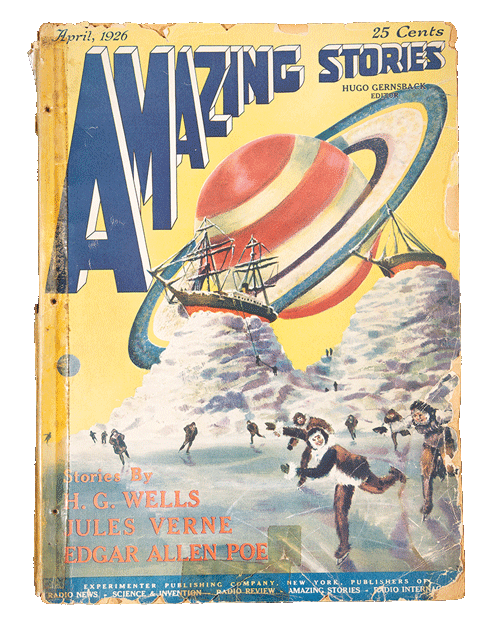
Among many other pulp periodicals found in the collection is an original copy of the first published science fiction magazine, Amazing Stories. The inaugural issue from April 1926 features the work of defining authors of the genre, including Jules Verne and H.G. Wells.
“It really marked the beginning of science fiction as we know it in the 20th century today, in terms of the publishing field,” Alexander said. “It was founded by Hugo Gernsbach, after whom the Hugo Award is named, and he coined the term ‘scientifiction’ to describe the kinds of stories he was looking to publish.”
At the time, many science fiction authors began their careers writing for short fiction periodicals like Amazing Stories, Alexander said. The colorful cover from prolific artist Frank R. Paul includes classic images of the genre such as distant planets and aliens.
“The Vampyre”
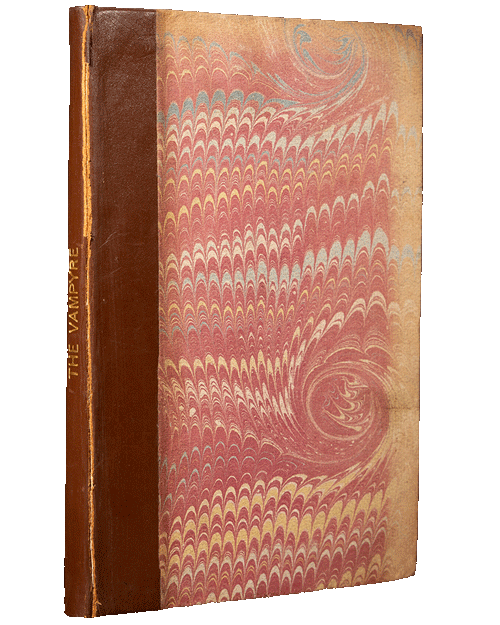
A rare first edition published in 1819, the novella written by John William Polidori is considered an early example of vampires in literature. The author wrote the book as part of a horror writing competition with contemporaries Lord Byron, Percy Shelley, Mary Shelley, and Claire Clairmont when they were vacationing together at a Lake Geneva villa in 1816.
“It has a particular mythology and an interrogation of sexuality and sexual menace within its pages that is a precursor to something like Bram Stoker’s ‘Dracula,’” Alexander said.
“Frankenstein”
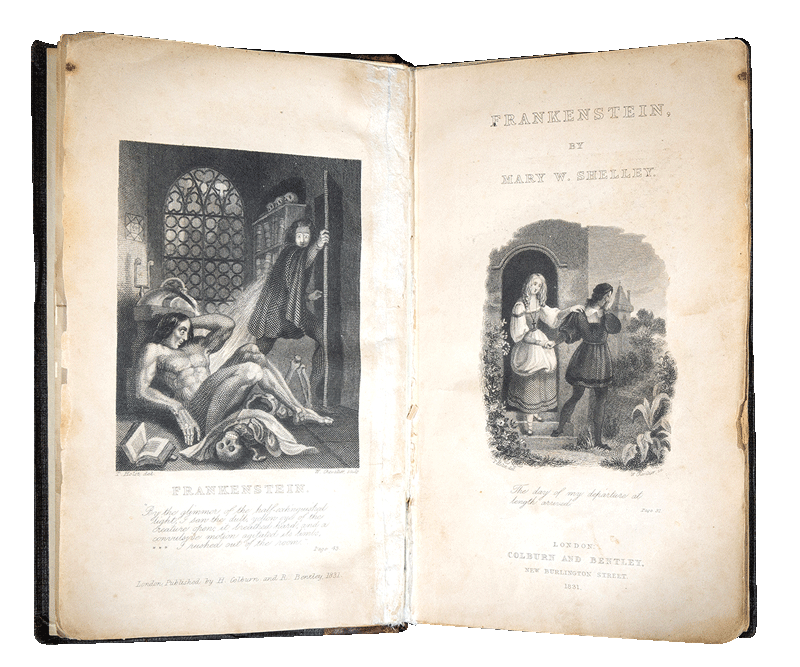
Mary Shelley’s iconic story about a monster created by a scientist was another result of the Lake Geneva writing contest. First published anonymously in 1818, Shelley’s name did not appear on the book until an 1821 edition. The Eaton Collection has this rare 1831 edition, as well as a first edition published in three volumes.
The story includes elements of gothic horror but is also considered a proto-science fiction text. Shelley was inspired to create the tale of a reanimated monster made from parts of corpses by Italian scientist Luigi Galvini’s famed experiments in which he used electricity to make the legs of dead frogs twitch, Alexander said.
“Le Testament d'un excentrique”
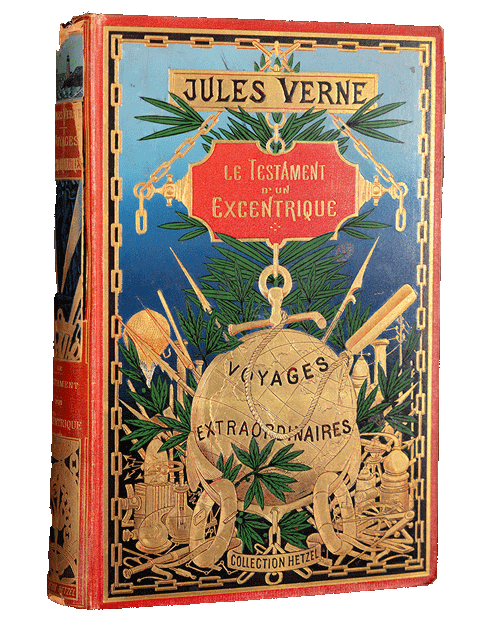
This 1899 first edition of “Le Testament d'un excentrique,” or “The Will of an Eccentric,” in its original French by author Jules Verne features an ornate cover and gold-lined pages. The novel tells the story of an eccentric millionaire who leaves his fortune to whoever can win a game he devised that involves traveling across the United States.
“It’s a classic adventure story featuring air travel and other advancements and, of course, Jules Verne was one of the pioneers of early science fiction,” Alexander said.
“The Left Hand of Darkness” cover art
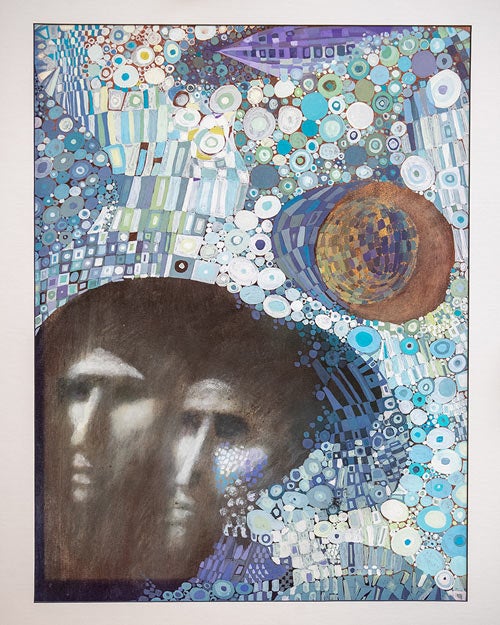
The Eaton Collection acquired the painting used for Ursula Le Guin’s iconic novel in an auction in early 2024. The artwork by famed American illustrators and husband-and-wife team Leo and Diane Dillon appeared on the cover of the 1969 first edition of the book, which went on to win the Hugo and Nebula awards.
“This is one of the most groundbreaking science fiction novels of the 20th century,” Alexander said. “This cover is absolutely gorgeous.”
The image is more abstract than many science fiction novels of the time, with elements such as a planet, a starship, and androgynous figures that tie into the book’s themes, he said.
“The Palm-Wine Drinkard”

The 1952 novel by Nigerian writer Amos Tutuola was the first African novel published in English outside of Africa. It was later included as part of the African Writer Series that brought writers from the African continent to an international audience.
“It’s a really interesting sort of folklorish tale that follows a man moving though his village and encountering all sorts of fantastical creatures and spirits, and the writing is just phenomenal,” Alexander said.
He purchased this early edition of “The Palm-Wine Drinkard” shortly after he joined UCR, believing it should be part of the broader, global conversation about science fiction and fantasy.
“Brown Girl in the Ring” manuscript

An important part of the Eaton Collection are the papers of about 30 authors that include notes, manuscripts, and correspondence with editors. Award-winning author Nalo Hopkinson, a former creative writing professor at UCR, donated her papers to the collection, which includes the manuscript to her 1998 novel. She continues to maintain a close relationship with the collection, recently sending another box of materials to the library.
“You can see that authors often annotate them, make changes as they go through various drafts,” Alexander said. “From a research standpoint, these are useful because you can really see the author’s thinking.”
“Black Panther” comic books
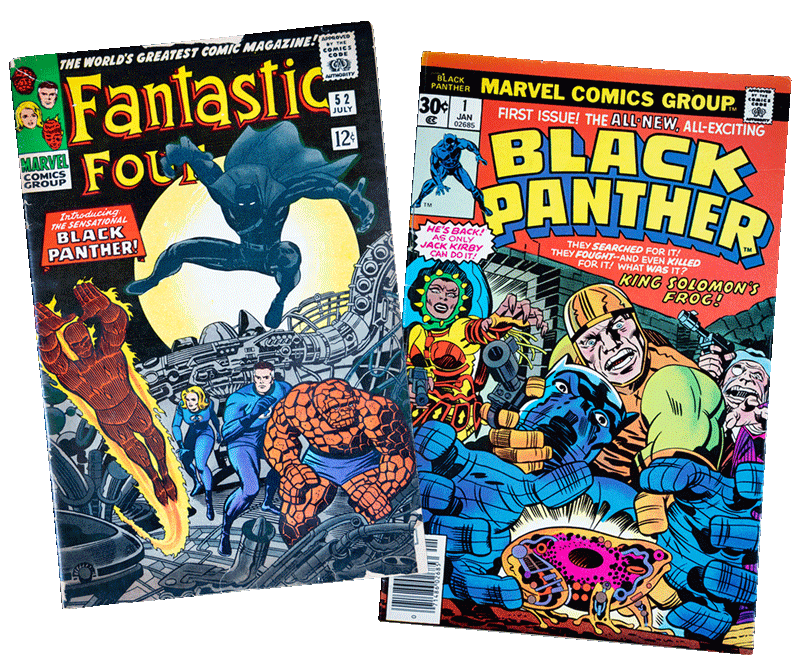
“Fantastic Four,” No. 52, published in 1966, features the debut of the Black Panther, T’Challa, and the fictional African nation of Wakanda. Considered the first Black superhero in mainstream American comics, the iconic character, whose story includes elements of Afrofuturism, received his own series with “Black Panther,” No. 1 in 1977, also in the collection. The character has gone on to be featured in several blockbuster Marvel films, including 2018’s titular “Black Panther.”
“Andromeda” television script
The shooting script for the pilot episode of the science fiction television series was based on material written by the late “Star Trek” creator Gene Rodenberry. The series, which ran from 2000-2005, follows Dylan Hunt, captain of the starship Andromeda Ascendant, and his crew in their efforts to restore the Systems Commonwealth, a government that was responsible for a time of extended peace and prosperity across the galaxies. Rodenberry has another UCR connection, as part of his 1972 television pilot “Genesis II” was filmed on campus.
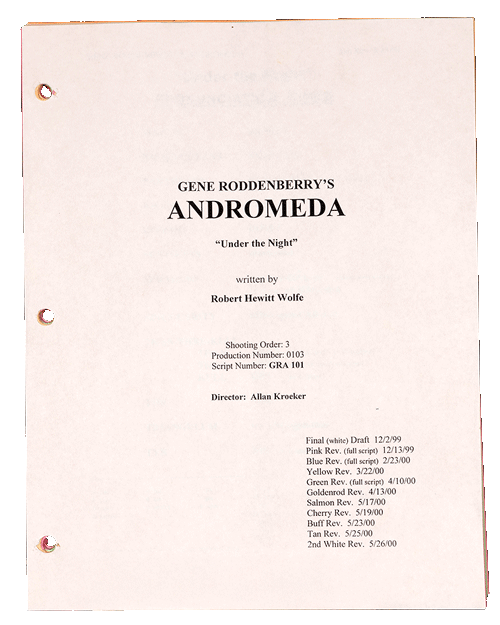
“Luke Cage, Hero for Hire,” No. 1
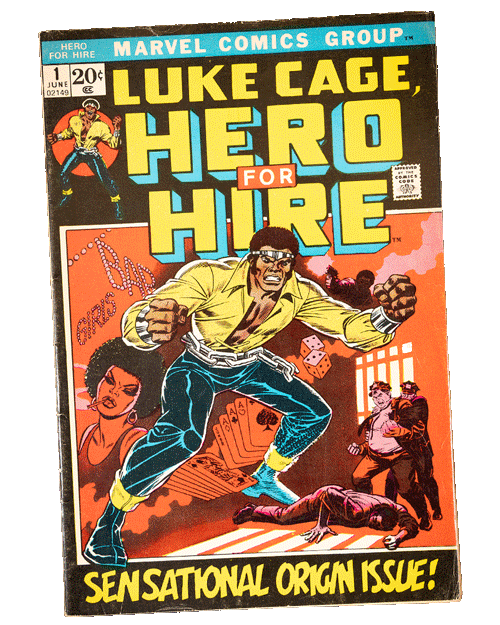
The 1972 comic book is the first Marvel comic with a Black superhero as the title character. Granted enhanced strength and bulletproof skin through an experiment gone awry while in prison, Lucas escapes and adopts the name “Luke Cage,” putting his powers to use as a “hero for hire” in New York City.
“What’s interesting about this hero and his appearance, at least in these early issues, is the way he’s depicted within the genealogy of abolitionist imagery, so often appearing as breaking chains, with chains literally around his waist,” Alexander said.